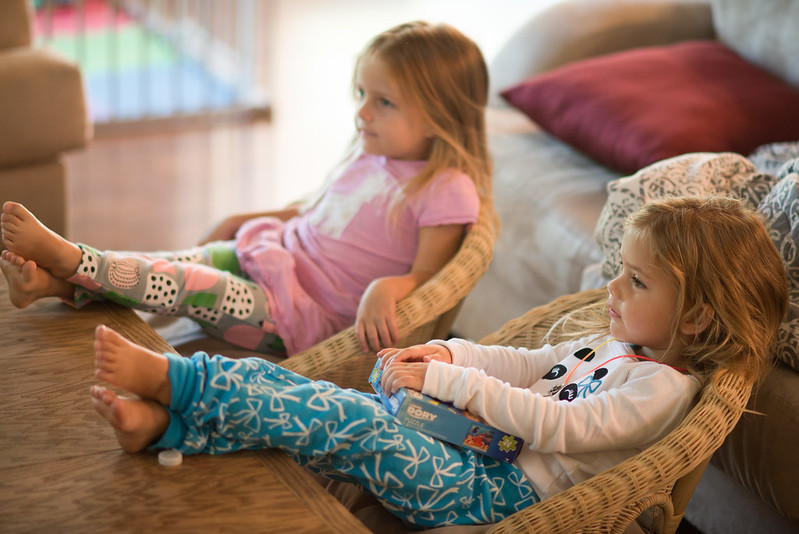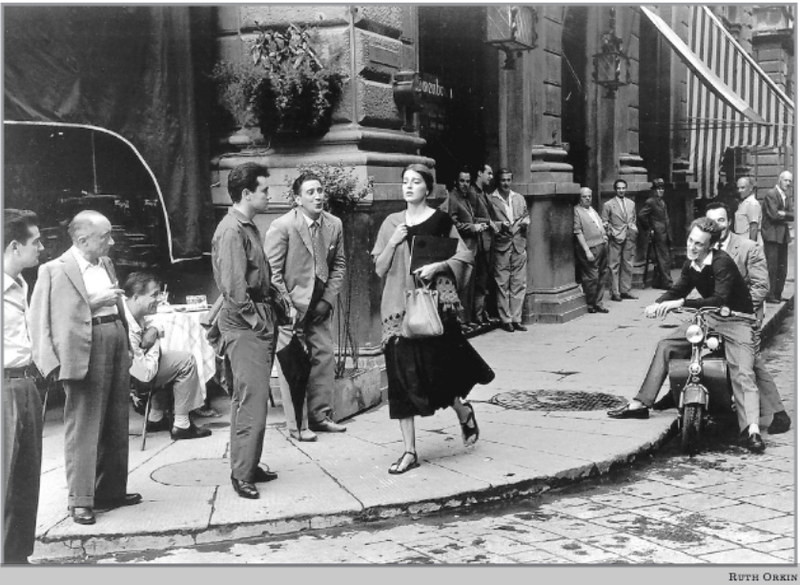Girls and women are always judged for choosing comfort—but what “comfort” means, even now, is not necessarily what you think.
Before the pandemic, girls and women who wore what they wanted when they wanted were at risk of being “dress-coded”—called out for being inappropriately provocative. (Remember last year’s leggings controversy?)
But with those still fortunate enough to have a laptop job luxuriating in comfortable clothes, I speculated now could be the time when norms change. After all, if Georgia school districts may not impose mask mandates for students to contain the spread of the deadly coronavirus, then surely comfort is having its moment.
Yet at the same time, some schools already have banned students from wearing pajamas during remote learning. In fact, rather than disrupt dress-coding, the pandemic exposes who gets to be comfortable and what “comfort” means.

I have been writing about slut-shaming for nearly 25 years, beginning my research before the term even existed. More recently, I have been tracking dress-coding, since attire is frequently seen as “evidence” of sluttiness.
In July, I surveyed 133 self-identifying girls and women to find out if they intend to continue choosing comfort above all else once the lockdown ends. The answer is yes—but because they define “comfortable” as not only feeling good but looking good, their clothes may continue to be misread as sexualized.
What motivates girls’ and women’s clothing choices matters because dress-coding has severe consequences. Girls and women have been denied the right to travel, had their education withheld, and blamed for being harassed and raped—solely because of their attire.
When Dr. Latisha Rowe, a Black physician from Houston, boarded an American Airlines flight from Jamaica to Miami with her young son and wearing a halter-top romper, an attendant instructed her to deplane or cover her body.
When a Nevada high school student wore a shirt that exposed her shoulders, a teacher called two school police officers, who escorted her to the office, and she was forced to miss class.
In a court trial of a Yale student accused of raping a fellow student on Halloween, lawyers suggested the victim had “asked for it” by questioning why she wore a cat outfit rather than something modest, like “Cinderella in a long flowing gown.”
Worst of all, dress-coding targets girls and women of color more than others. The National Women’s Law Center has shown that schools are more likely to remove Black girls from the classroom because of their clothing. This may be because, as a Georgetown Law study has demonstrated, adults see Black girls as young as five as more sexual and less innocent than their white peers.
During the COVID-19 Pandemic, What Do Girls and Women Think About Their Clothes?
Well-aware of their risk of being dress-coded, what do self-identifying girls and women think about their clothes now, during this unique moment?
My survey asked about the clothing decision-making process before, during and after the pandemic. Roughly one-third of respondents were between the ages of 10-28, one third were 29-49, and the remaining third were between 50-89.
The results show, unsurprisingly, that choosing clothes to accentuate the body for the benefit of other people is not a primary driver during the pandemic—with only 24 percent saying this is important for interactions on video calls and 16 percent saying it’s important for in-person encounters.
What is surprising is that nearly 40 percent reported that even before the pandemic, they never prioritized clothing that accentuated their bodies.
Moreover, one person’s comfortable is another person’s sexy. Many of us define “comfortable” as desexualized—think loose-fitting pajamas and Birkenstocks, not a body-hugging cocktail dress and Christian Louboutins. Yet respondents indicated that “comfortable” is an elastic concept—it can have multiple meanings and is not always connected with physical comfort.
I asked respondents to select one of three statements to describe what “comfortable clothes” mean to them:
- “My clothes feel soft and not tight, like pajamas, and I don’t care what I look like”;
- “My clothes make me look sexy or attractive to other people”; or
- “My clothes make me look sexy or attractive to myself.”
Overwhelmingly, they said that “comfortable” before the pandemic was about looking “sexy or attractive to myself” (60 percent), and this is how most (62 percent) imagine they will define “comfortable” post-pandemic.
Currently, 67 percent define “comfortable clothes” as feeling “soft and not tight, like pajamas.” Yet post-pandemic, only 30 percent imagine they will define the term in this manner.
In short, women seek comfort—and for most, “comfort” includes “sexy.” But “sexy” is not always tied to the desire for sexual attention. “Sexy” can mean simply feeling good about one’s appearance for the benefit of oneself, not others.
Respondents wrote, “Comfortable is what makes me feel great,” “Comfort to me is more about how confident [clothes make] me feel in my body,” and “I think of ‘sexy’ clothing as anything that makes the wearer feel most comfortable and most empowered in their interactions with others.”
For some, feeling comfortable is the experience of wearing clothes that other people may find uncomfortable.
“My comfort level is tightly linked to my femme identity,” wrote one respondent. “I find that what other people often consider ‘comfortable’ clothes are too androgynous (or masculine-feeling) for me to be comfortable wearing them.”
Many volunteered they are satisfied not wearing a bra during lockdown and are considering foregoing it in the future altogether.
Although it shouldn’t matter what guides a woman to choose her clothes, and no woman ever is “asking for it,” these results demonstrate that truly, women just want to be comfortable—no matter how they define the term.

The problem is not that girls and women sexualize themselves inappropriately—it’s that other people sexualize them inappropriately, and then blame them for being sexualized. I was once cat-called while eight-months pregnant in a winter coat.
To end dress-coding, we must redefine the very meaning of comfort. When the lockdown ends, expect to see more leggings and fewer bras.
To those who take offense, I say: If you don’t like what you see, place your mask over your eyes.





